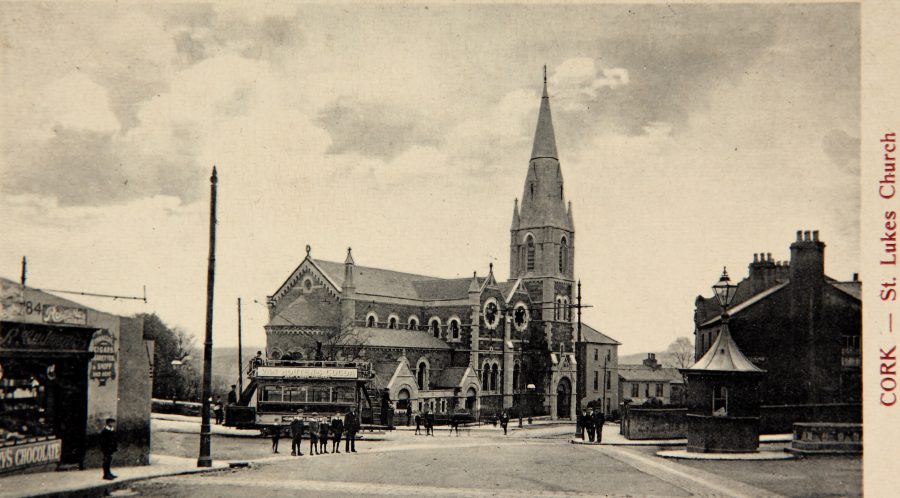
Kieran’s Our City, Our Town Article,
Cork Independent, 24 June 2021
Journeys to a Truce: The Mid-Summer Ambushes
On the evening of 23 June 1921, there was a concerted attack on all RIC barracks in Cork City and suburbs at an appointed time by members of the first and second battalions of Cork IRA Brigade No.1. In the city centre, a fine summer evening was disturbed closing on to 7.30pm. Loud explosions, quickly followed by shots, startled everybody. The first reports were heard all over the city and within the suburbs. The mobilisation of Crown Forces ensued, and the rattle of rifle fire, the tearing of machine guns, added to the fear of citizens outdoors and indoors.
In a short time, the streets became deserted. Tram cars with their complements of passengers went to the end of their journeys and then returned to the central station. The occupants, motor men, and conductors of some ofthe cars were ordered off, searched, and questioned by the RIC and Black and Tans. By 8pm, business houses that were open were soon shuttered and closed. In various districts, and anyone out was halted and searched. Towards 9pm quiet was restored, but the streets remained deserted. At the South and North infirmaries, they were busily engaged attending to several people admitted consequent to the explosions and subsequent firing.
The Cork Examiner, the following day on 24 June, reported that bombs were initially thrown at police in Tuckey Street, where constabulary occupied an old barrack and had recently acquired premises, which fronted the Grand Parade. Some citizens who were in Washington Street and Grand Parade about 7.30pm spoke to the press about a high speed of a motor car passing down Washington Street and onto the Grand Parade: As this car came along the Grand Parade by the Berwick Fountain, opposite Tuckey Street Police Station. Two loud explosions, followed by quick firing, startled everyone.
Revolver shots also were discharged by the occupants of the car at the windows of Tuckey Street barrack, but nobody was injured. The police fired on the occupants of the motor, and believe that they killed one and wounded another, but the car dashed on through Tuckey Street and over the South Gate Bridge.
A stampede on the Grand Parade followed, and it was noticed that some people fell, whether wounded or terror stricken. There was one fatality. Josephine Scannell, aged 19 years, living at Frenche’s Quay, was shot dead through the heart. She was seated at the window of her residence engaged working at her sewing machine. The fast shots had barely sounded when a bullet struck through the window and hit her over the heart. She collapsed immediately, and through assistance was soon removed by the Cork Corporation ambulance to the South Infirmary. She was dead on arrival. The body was later taken from the Infirmary by her grief-stricken mother back to her house.
Apart from the Tuckey Street incident, a bomb was thrown into the garden of a house in Ashburton Terrace. No damage was done, but it is reported that the child of the inmate of the house, who was playing in the garden, had a very narrow escape, the bomb exploding under the little girl’s feet. It was following this that the firing started in the St Luke’s Church direction, and several civilians were wounded.
The neighbourhood of St Luke’s was also thrown into alarm about 7.30pm. At that hour two men came to the door of the public bar of Messrs. Henchy, Tea and Wine Merchants, St Luke’s. They simply pushed glass door and fired two shots from revolvers. They then hastened away. One man in the bar was shot in the face and was seriously wounded. The wounded man was taken to the military hospital. The second shot wounded another man and he was conveyed to the North Infirmary, where on examination it was found that his wound was not dangerous.
The bomb thrown at Shandon Barracks was, like those thrown at Tuckey Street, thrown from a motor, but whether the distance from the roadway to the barracks was too far, or through some other reason, there was no very great damage done, und there were no casualties.
Robert C Ahern, D Company, 2nd Battalion, Cork No.1 IRA Brigade in his witness statement for the Bureau of Military History (WS 1676) describes that he was one of a small party of men who took part in an attack on Douglas RIC Barracks that evening. The object of these attacks was to show the enemy that we were still strong in numbers and equipment, notwithstanding our losses in officers and men killed, wounded, or taken prisoner.
Of the ambush on Douglas RIC Barracks, Robert outlines a short five minute event but a dangerous situation: “Sailor Barry, Eddie Fitzgibbon, one other man and myself opened fire on the front of the barracks whilst other men from ‘D’ Company took the rere of the building. The garrison of police and Black and Tans replied with rifles and machineguns. None of us suffered a casualty, and I am not aware if any of the garrison of the barracks was hit during the firing. So far as we were concerned, the affair was over in about five minutes, although firing from the barracks continued for some time after we had left”.
Caption:
1105a. St Luke’s Church Area, c.1910 from Cork City Reflections (Amberley Publishing, 2021) by Kieran McCarthy and Dan Breen.